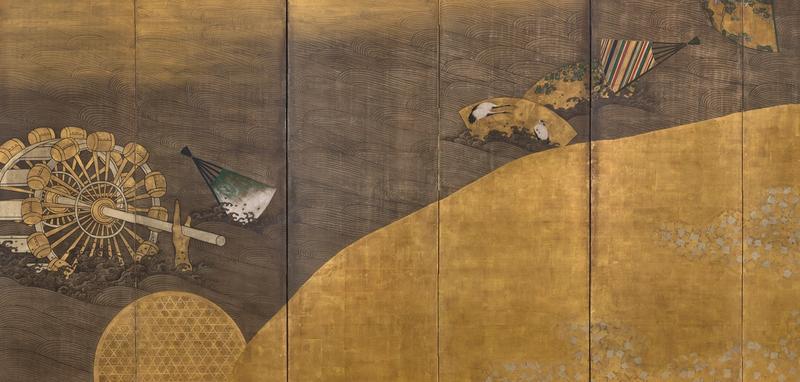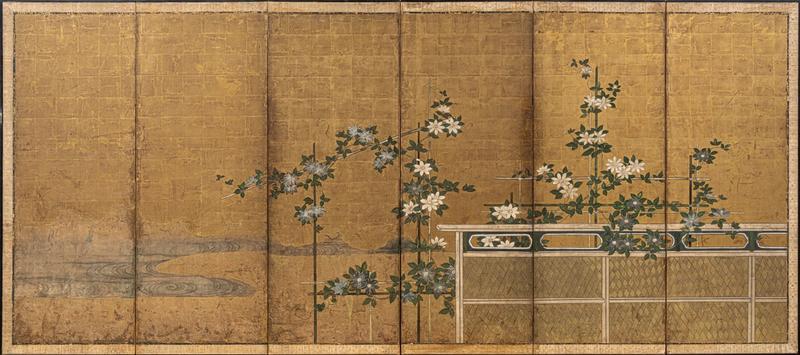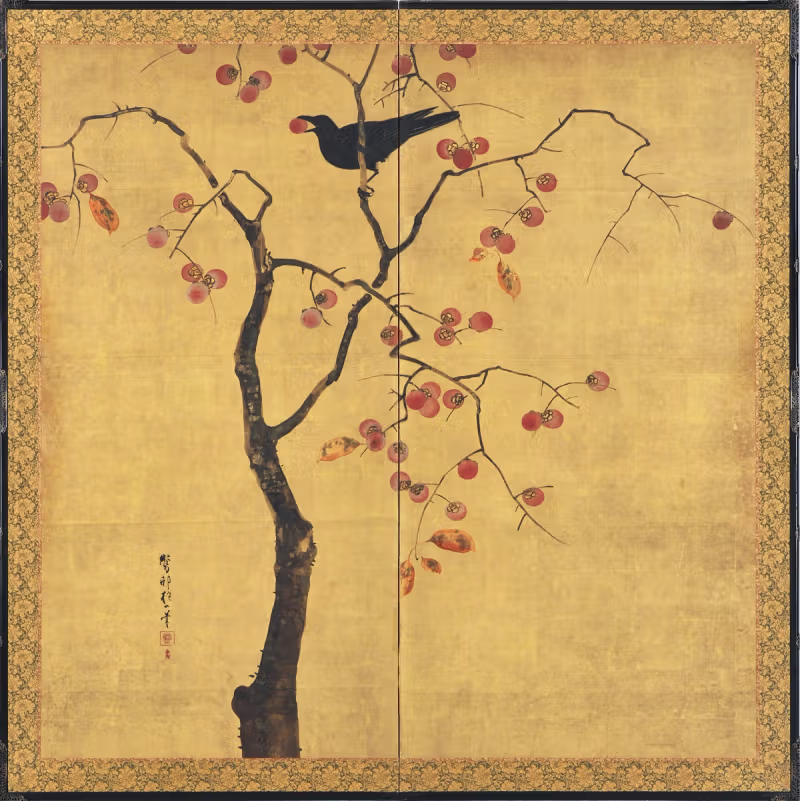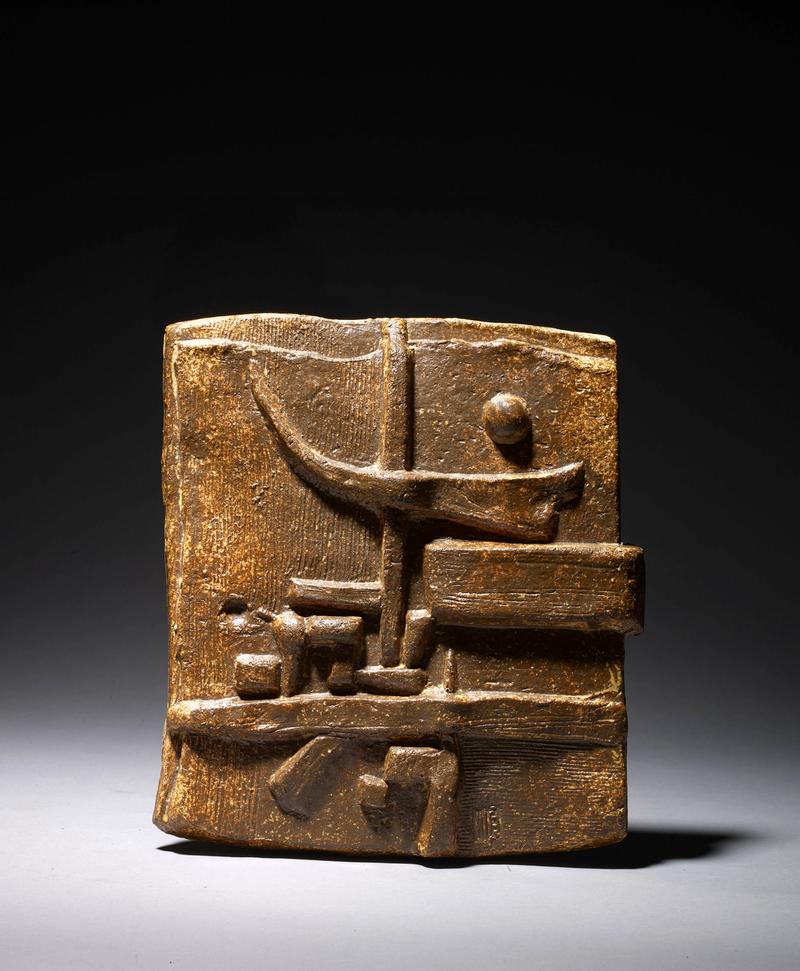A pair of six-fold screens with clematis
A pair of six-fold screens depictingwhite and bluish-purple clematis on trellises behind woven fences and beside a stream,against an abundance of golden clouds.
Ink, colour and gold leaf on paper.
Japan, 17th century, Edo period.
Provenance:
Purportedly from the contents of an important Belgian castle. Private collection Belgium.
The Japanese name of clematis, tessen, meaning 'iron wire', was given due to its thin, wire-like vines. Clematis is considered to have first arrived in Japan during the mid-Muromachi period (1336-1573). From the Momoyama period (1573-1610) onwards, representations of clematis were mainly incorporated into textile designs like Noh costumes and kosode (a type of kimono), where the flower was often depicted as stylised floral vines (karakusa). In literature, clematis is associated with the season of early summer, and from the Edo period (1610-1868), it has been used in haiku (Japanese short form poetry) as one the kigo (seasonal words). The continuous spirals of this vine symbolise enduring good fortune, the continuity of happiness, and the prosperity of descendants, making it a favourable, auspicious motif. However, screen paintings featuring clematis as a main subject have hardly survived and this pair is a rare example, elegantly featuring its graceful flowers, leaves, and distinctive tendril.



















